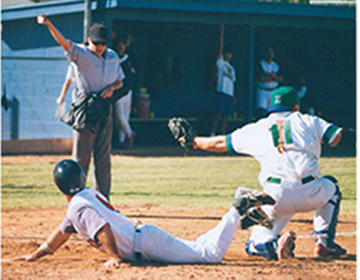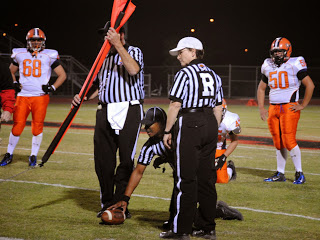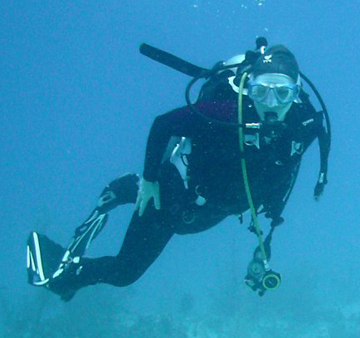“You really shouldn’t be wearing spaghetti straps in class,” I said, staring at the pretty teen whose bare shoulders belied the fact that it was a chilly morning.
She rolled her eyes, insinuating, I think, that I was old and didn’t understand. I wanted to say that back in the ’60s, when I was about her age, my parents rolled their eyes at my hip-hugging, ragged-edged bellbottoms, tight leotard tops, and miniskirts that just covered the edge of my bottom. But I bit my tongue, knowing she wouldn’t believe me. Students seem to think teachers have no lives outside of the classroom and that, after they leave and the lights go down, we curl up under our desks to rest and wait until they arrive again the next day.
The whole dress-code issue got me thinking about uniforms. The term itself causes teens to gnash their teeth, practically weeping at the thought of someone specifying what they can and cannot wear. For me, however, uniforms generally gave me a sense of belonging.
My first uniform consisted of white figure skates, beige tights and a navy-blue skating dress. Though a mediocre ice skater by all measures, every time I saw those Olympians or the top-notch competitors I sometimes shared the ice with, I always pictured myself among them, gold medal proudly displayed on that ribbon around my neck. A kid can dream and dream I did.
As a Girl Scout, I can’t say I loved the white shirt, jaunty tam, and green skirt, which I did manage to hem to almost mini proportions. What I did love was my merit badge sash, it’s bright array of emblems signifying my scouting accomplishments. I took a great deal of pride in those small colorful fabric disks. All these years later, my sash is the only part of my uniform I still have and one I continue to cherish.
In my early twenties, I became a sports official, which necessitated all sorts of uniforms and accoutrements. Baseball required a mask, shin guards, and a chest protector that, ironically, supplied no real protection for those of us with actual breasts. There were ball bags and caps and steel-toed shoes, with grey polyester pants and light blue button-downs that, over the years, morphed into dark blue pullovers. And let’s not forget those little black plastic clickers that enumerated balls and strikes and outs. Any umpire who ever tried to work a game without one will tell you the near impossibility of keeping the count in your head.

Basketball, soccer, and ice hockey had relatively simple attire, by comparison: black-and-white striped shirts, black shorts or pants, and a whistle. Of course, one needed hockey skates for hockey, and those little red and yellow cards for soccer, but keeping track of the gear was pretty easy.
Not so for football – the only sport I still officiate – which is a complicated equipment affair that necessitates I tote a wheeled bag to my Friday night high school games. Athletic leggings are covered, in my case, by prescription-strength knee braces, which are concealed by belted black pants displaying a white stripe down each leg. I tuck the lanyard bearing my Fox40 whistle beneath the collar of my striped shirt and slip the notepad on which I’ll document the captains of both teams, each time out, and any nefarious behavior that might require further paperwork in my breast pocket. A blue bean bag for identifying the spot where a fumble was lost or where possession was gained on a punt is pushed into the left side of my belt, while my yellow flag is tucked between the top of my pants and right hip. An elastic down indicator encircles my wrist, which, like the previously mentioned clicker, is one of those seemingly inconsequential bits of gear, until you find yourself in the middle of a game wondering if you’ve lost a down. We also have caps and watches and radios and ear pieces and down clips and black shoes. Added up, my football gear might not seem like much, but the horror of arriving unprepared leaves me and many of my brethren carrying duplicates: two shirts, extra shoes and flags, enough whistles to outfit the whole crew, and multiple hats. Speaking of the latter, my cap is white, because I’m the referee and crew chief. And it is at that moment, when I look in the mirror and adjust that hat, that I truly feel like a football official.

While working as a TV sports reporter and anchor my “uniform” was less specific than others I’ve worn, but there was prescribed clothing, nonetheless. In television, there is a specific look required. (If you want proof, click through your local news channels.) And though every station would shuttle me off to a consultant who would look me up and down and then proceed to change my hair, make-up, jewelry, and clothing, the results pretty much looked like every other woman who plied her trade in front of a TV camera.
One of my favorite uniforms is one that keeps me alive. My black, neck-to-ankle scuba skin protects me from the sun, which as a red-headed freckled person is an ongoing battle. My buoyancy control device keeps my head above water, when need be, while my regulator allows me to breathe when I descend down into the sea. My dive computer helps me discern when I should take those decompression stops, so I won’t get the bends, and my fins help me maneuver through currents that might whisk me out to sea, if I’m not careful. Without my mask, I’d be blind in a watery world. As much as a uniform, my scuba gear is a life-support system.

All of my uniforms share something in common. When I see ice skaters, or Girl Scouts, or sports officials, or scuba divers, or women on TV, I know we share a common history. Despite our age, or where we reside, or any other details that define our lives, we recognize that we hold similar experiences and, though we may be strangers, we are also comrades.
I hope that, at some point, everyone gets to wear a uniform. Maybe even the child in the spaghetti-strap top. Perhaps then she’ll understand that uniforms are nothing to fear, rather they are links that bonds us to one another.

Anne Montgomery’s latest novel, The Scent of Rain, tells the story of two Arizona teenagers whose fates become intertwined. Rose flees into the mountains to escape from her abusive polygamous community where her only future is marriage to a man older than her father. Adan, whose only wish is to be reunited with his mother, is on the run from the cruelties of the foster care system. Are there any adults they can trust? Can they even trust each other? The Scent of Rain is available at https://www.indiebound.org/book/9780996390149 and wherever books are sold.
Love the ending…how through uniforms we share a common history. Brilliant! Great post, Anne!
LikeLike
Thank you, Sharon. I do believe it’s true.
🙂
LikeLike
Nice, we will have to scuba soon.
LikeLike
Don’t tease me. 😉
LikeLike